Drive into the wide open landscape beyond Drummond, Montana, set on an old cattle farm amid a twelve-foot polar bear and woolly mammoth sculptures, you’ll find Bill Ohrmann’s museum and gallery—and a lifetime’s worth of commentary captured in his paintings. Sadly, Bill left us in 2014, but his art lives on.
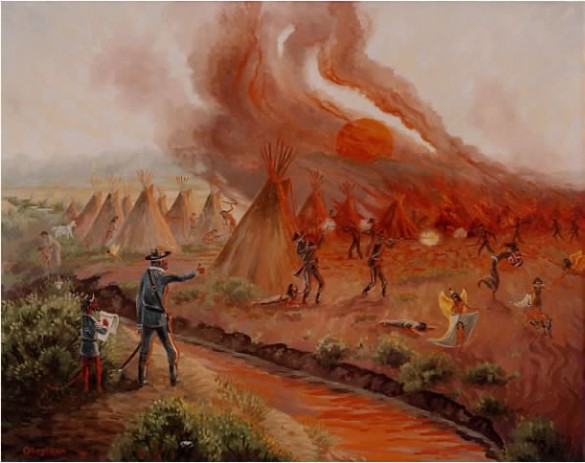

Bold Strokes
By Erika Fredrickson, published in the Missoula Independent
When Bill Ohrmann was 78 years old, he opened up a book about Vincent Van Gogh and decided to become a painter. It’s not that he’d never painted before. Ohrmann’s son, John, remembers his dad painting here and there while working as a rancher, but he didn’t do it very often. When his dad did dabble with paints, the work was always serene wildlife scenes.
“They’d always been these nice, peaceful elk-on-the-mountainside paintings,” says John, 57. “The sort of thing that Robert Bateman or Carl Brenders would do.” But after opening the Van Gogh book, Ohrmann started to change his approach to painting—both in his dedication to the art, and his style. He didn’t just emulate Van Gogh’s bright, swirling color, but he delved into darker material, too.
“It did surprise me,” John says of his father’s style. “Now when he puts his brush to canvas the paintings are in your face. And they bring tears to your eyes.”
Bill Ohrmann is now 94 years old. The Ohrmann Museum & Gallery that he built eleven years ago sits on the family cattle ranch he’s lived on since 1933, in Flint Creek Valley, two miles south of Drummond just off Highway 1. It’s situated in the middle of nowhere. A menagerie of wild animals guards the gallery’s front door. At the same time he started painting, Ohrmann began welding these metal animals. Some stand as tall as 12 feet high, their towering frames majestic against the backdrop of the Flint range. On one side of the yard there’s a rhino in mid-run. In another spot a dodo bird guards an egg with a baby dodo peeking out. Across the way from the dodo, a gigantic wooly mammoth aims its trunk forward, framed by humongous curled tusks.
httpvh://youtu.be/GEv1vAGdqA4
Be Thou Always As A Guest, A Portrait of Bill Ohrmann, A film by Sean O’Brien.
“Something to Offend Everyone”
Inside the gallery at least 100 of Ohrmann’s colorful and controversial paintings cover the walls from floor to ceiling, and just as many or more are stashed behind closed doors. It’s a shrine to his work over the last 16 years, a visual history of not only his own evolution as a late-in-life painter, but also filled with Ohrmann’s distinct take on decades of human misdeeds. Many pieces graphically depict environmental disasters, animal cruelty and general destruction. Some are more wistful, images of the world Ohrmann longs for, a world filled with fruitful gardens, wild animals and dramatic Van Gogh-esque skies. All of them, regardless of content, utilize Ohrmann’s playful use of colors and cartoon humor.
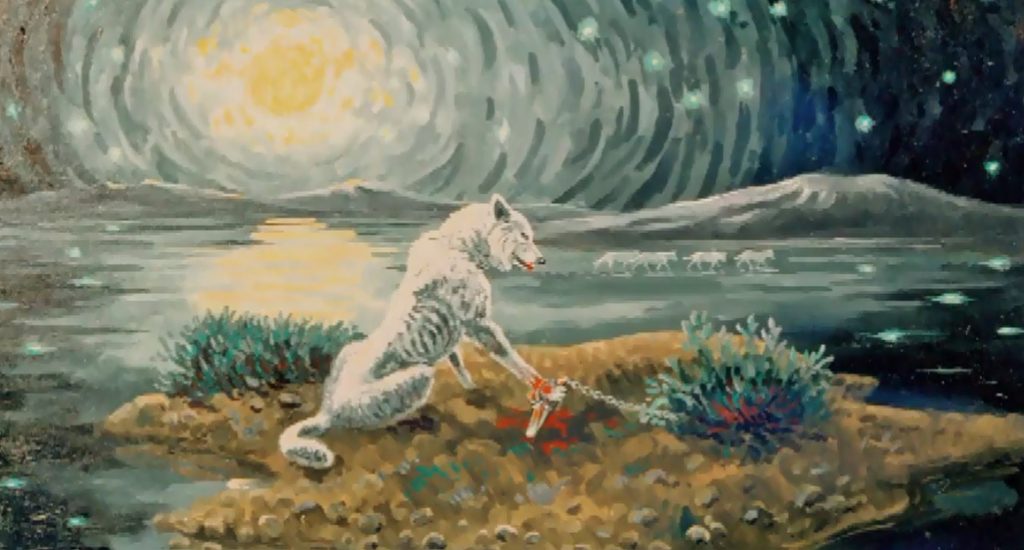

A sign near the gallery’s front door says, “Usually Open.” Another welcomes visitors to take photos, sit on the turtle sculpture, let their dog out and “think your own thoughts…crackpot tho [sic] they might well be.” Ohrmann doesn’t really care what people think of his work and what it means. He understands it may draw some attention—he’s had a solo exhibit with the Missoula Art Museum, and a documentary about the artist debuted in 2010—but he’s not caught up in the business or the hubbub. He’s perfectly content simply letting his copious work speak boldly for itself in a remote gallery in the middle of nowhere.
Standing at the entrance to the museum, leaning on a carved wooden cane, he nods his head slightly when asked about what he does. “Yes,” he says with a quiet, slow drawl, an actual twinkle in his eye. “Some people are quite offended by my work. When they walk in and then just walk out, I know they’re offended. Well, I’ve got something to offend everyone.”
Stationed in the South Pacific in World War II
During World War II, the U.S. Army drafted Ohrmann. He rented out his cattle farm to a neighbor and left everything behind, not knowing if he would ever return to his Montana home. After training for six months to become a mechanic—“I must have learned something there, I don’t know,” he says—the Army stationed him in the South Pacific as crew chief on a C47 cargo plane. “It certainly was interesting, all right,” he says. “But we really didn’t get to enjoy it much because at that time we couldn’t see any end to the war. We thought we were almost going to have to spend our life over there.”
Ohrmann says in many ways his crew had it easy. They flew over the top of the fighting, simply dropping in supplies. With time on his hands, Ohrmann carried watercolors with him everywhere, making cartoon sketches of camp life. The sketches were never of the war, just of day-to-day diversions away from the battlefield. Ohrmann saw it as a way to pass the time, a way to escape what was happening around him. “Nowadays I notice people send e-mails back and forth,” he says, “but then it was all letters. My friends would ask me to make a sketch of this or make a sketch of that. And I’d do it for them and some of them ended up with a lot of sketches.”
Working the Ranch, Carving Wildlife Sculptures
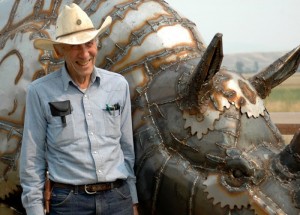

When he returned to Montana after the war, Ohrmann found himself in dire financial straits. There were few cattle and his machinery was in poor shape. “There wasn’t much to come back to,” he says. “It was really a tough go for awhile to get started again.” He and his wife, Phyllis, slowly worked the ranch back into shape.
During that time, Ohrmann began carving animals out of wood. It was something, he says, that fit his ranching schedule because he could set a project down and pick it back up at his leisure. Plus, it was a way for him to show his affinity for the wildlife that he encountered on the ranch. “I think I’ve always had these ideals,” Ohrmann says. “On our ranch we always welcomed all wild animals no matter what they were, and we always tried to run it so they could live there. We didn’t shoot every coyote or bear that crossed it. We just have sympathy for animals I guess.”
John Ohrmann recalls how his father always had environmental magazines in the house long before the rest of the world seemed interested in such things. “We got Field & Stream magazine and there was a conservation editor for that,” John remembers. “As soon as that magazine got there dad was reading the column.” John also recalls how different his family seemed in comparison to other ranching families in the area. “All the other ranchers would shoot any coyote they saw, any predator they saw. If they didn’t grow it, then it had to die,” John says. “It’s just totally senseless, but they had that pioneer ethic where they had to conquer anything that nature did that was in their way. They had to wipe it out. And we just didn’t have that.”
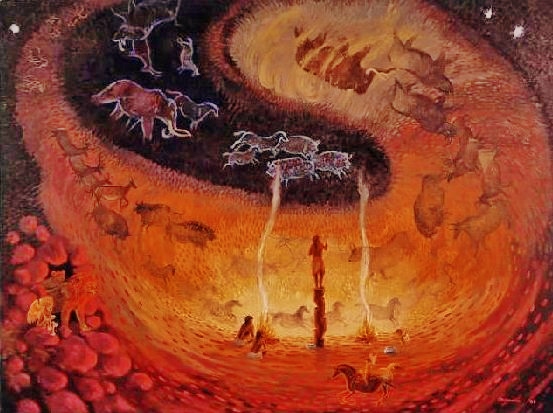

A van Gogh Epiphany, Dante-like Visions
It was only when Ohrmann stopped cattle ranching in 1997 and passed the vocation off to his children that he looked at that Van Gogh book and decided to paint full-time. In some ways, Ohrmann considered it a practical decision. Before, he says, he’d have to leave a painting half-finished to do work on the ranch. The paint would dry, he’d have to re-mix the colors on his palette, often ending up with a hue that didn’t match. Now he could paint throughout the day without interruption. The change influenced more than just the quality of Ohrmann’s work.
Now, rather than painting as an escape from his work, he could use the medium as an outlet for his strong views of wildlife and the land. He painted scenes of bloodied wolves caught in traps, something he’d witnessed around him all his life. “Trust Us” shows bulldozers destroying a mountainside to construct a dam; a government official to the side reassures a little boy with a fishing pole to trust what they’re doing.
Ohrmann also started to attach famous quotes to his work to underline his commentary. One painting shows a man with his dog above an Abraham Lincoln quote: “I don’t think much of a man’s religion if it makes no difference to how he treats his dog.” Other works are accompanied by passages from Emerson, Tennyson and full poems from Missoula poet John Haines (who mostly lives in Alaska now). Ohrmann’s work continued to evolve with darker, Dante-like visions. “Last Circus” shows a circus ring, but instead of animals, it features people crouched half-naked on chairs and in cages, and little children ushered through fiery hoops by demons. The animals—rats, cows and monkeys—comprise the spectators. “I was kind of thinking,” Ohrmann explains, “you know, the way we treat animals, maybe we ought to have a turn in the same way some day.”
The Heart Overcomes Human Failure
While less graphic in nature, Ohrmann’s metal sculptures resonate with the same criticisms of human failure. When he tried to create the dodo, he searched for a photo of a skeleton to make his work as accurate as possible. “A sea captain, I think, made a drawing and there were a couple of other drawings,” he says. “It’s hard to tell if those were accurate or not because they were just amateur. After killing thousands they never saved one single skeleton. There wasn’t one person who had the foresight to at least save a skeleton.”
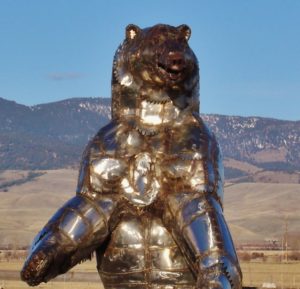

In some ways, recreating a dodo bird or a wooly mammoth is Ohrmann’s way of resurrecting the extinct creatures, righting a wrong. But one aspect to this part of his work isn’t as apparent. He inserts a metal heart inside the breast of each metal animal. There are ways to see them. The wooly mammoth, for instance, includes a tiny door you can look through where a light illuminates the heart.
When Ohrmann was 7 or 8 years old, he heard a story that would haunt him for years to come. His father knew a solider who fought in the 1877 Big Hole Battle in which the U.S. Army attacked and killed a group of sleeping Nez Perce Indians, many of them women and children. His father’s friend passed along his account of the battle directly to Ohrmann. “It was needless what they did to the Indians,” Ohrmann says, “to realize that they did that—attacked the camp before the Indians woke up. I remember him saying that when they attacked, some of the Indians tried to melt lead for their guns over the fires even while the battle was going on.” That image stayed with Ohrmann and in 2000 he painted a picture of the Big Hole Battle cynically titled “How Colonels Become Generals.” The piece shows teepees on fire and a leader of the U.S. Army standing nearby, giving a thumbs-up, flanked by a devil.
Ohrmann says his style has changed subtly over the last 12 years. He points to one painting in the corner of the museum showing people on an island, chopping down trees while a goat in a chair directs them. He explains that in this work the goat is the devil, encouraging the people to continue what they’re doing.
The Abstraction of Evil, the Color of Sky
While his imagery has grown more abstract, his colors are more complex. Using the same island painting as an example, he points to earlier work where the colors are more elementary and less blended. “I’ve just learned how to get certain colors, and that’s something you can’t learn from books,” he says. “They don’t want to tell you that, I guess. The most important part is graying the colors. See this sky here isn’t grayed very much [in] my earlier paintings.”
He turns and points to more recent pieces. “But then this one is grayed and that one is grayed even more,” he says. “And to get that gray you take the blue and mix it with its opposite color on the color wheel, which is orange. And isn’t that a nice, more soothing sky?” Ohrmann’s attention to detail extends to his sculptures. Kate Davis of Raptor of the Rockies apprenticed for two years with Ohrmann making metal replicas of her birds. She found that he makes small wire models of each one so he can copy it in larger form, and that he takes great pains to make each one as physically accurate as possible. She sees his work as much more than just commentary. “There’s nothing like his stuff out there,” she says. “He’s been a rancher all his life and he has great knowledge of anatomy. And you can’t just glance at them. They require careful attention because of the detail and story.”
For all his meticulous and prolific work, Ohrmann isn’t interested in racking up sales. He has sold some bronze and wood sculptures and an occasional large metal animal, and his website does offers a few prints and note cards. But he likes to keep most of it up on the museum walls or in his yard. It helps him keep his message out there.
The Gentleness of St. Francis of Assisi
Despite his dark images and his fierce convictions, Ohrmann is constantly smiling. Sitting at the kitchen table with Phyllis, he tries to explain how they met during the war. After sitting there for a moment, he finally says, “I was just trying to think of some fantastic story to tell. You know, you can tell a stranger anything.”
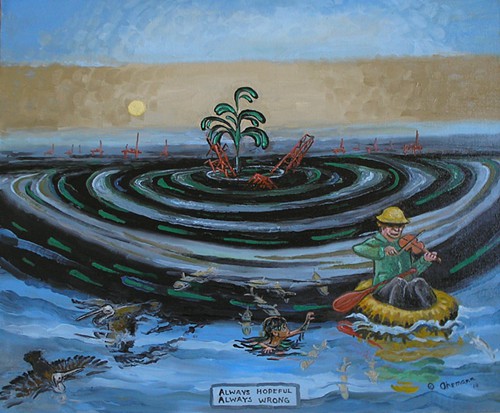

That’s not a problem in Ohrmann’s creative world. One self-portrait titled “All the Friends I’ve Known Had Souls” shows Ohrmann walking with his wooden stick, surrounded by a horse, deer, skunk, dog, bear, coyote and birds. In another self-portrait, a three-legged deer follows him around. “That used to be a pet on the ranch,” explains Steve Glueckert of the Missoula Art Museum. “What it reminds me of is St. Francis of Assisi. He has that same kind of gentle caring and his practice draws attention to how we treat all beings on earth. But you know, it might be a little overboard to compare Bill Ohrmann to St. Francis.”
The juxtaposition between Ohrmann’s strong views and his kind nature only adds to his appeal. Missoula filmmaker Sean O’Brien decided to make her documentary about Ohrmann, titled Be Thou Always As A Guest after one of his paintings, in part because of how the artist acts away from the canvas. “He just strikes me as an incredible blend of courage and sensitivity,” says O’Brien, a film studies professor at the University of Montana. “Often times highly sensitive people can’t face the harsher realities of life. He has the courage not only to think about some of the cruelties that take place, but he has the courage to illustrate it.”
Ohrmann’s unassuming demeanor also speaks to his contentment operating outside of traditional artistic circles. In fact, he appears to thrive having others come to him, on his remote ranch, on his terms. He recalls a man once pulling up his driveway and taking a long look around the gallery. The man was amazed at the paintings, but puzzled by the location. “He was a man from New York writing a book,” Ohrmann says. “He stopped here and said, ‘Why in the world is a place like this out in the sticks?’”
Ohrmann laughs loudly, his eyes watering. “Well,” he says, “he didn’t know that I thought we were right in the center of the universe.”
Erika Fredrickson writes for the Missoula Independent. To order prints or the full-length DVD of Sean O’Brien’s film on Bill Ohrmann, see: OhrmannMuseum.com.
Updated 26 September 2016

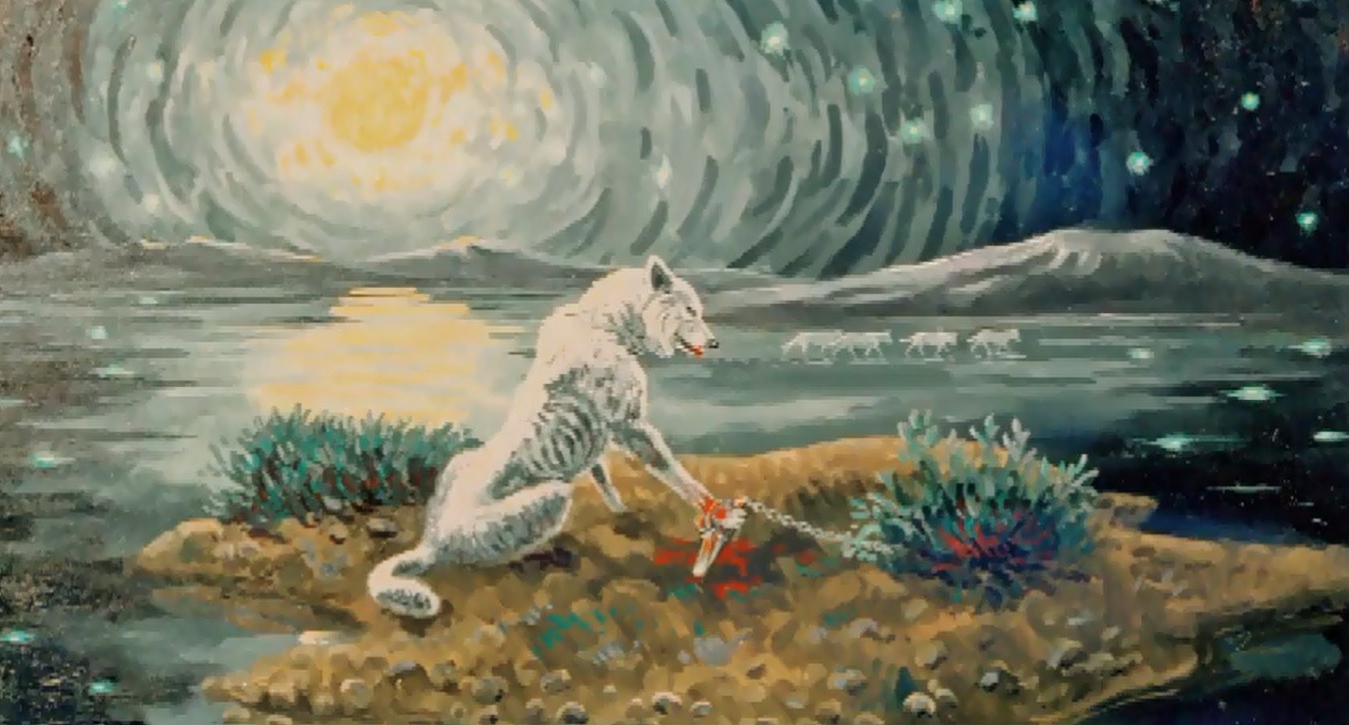


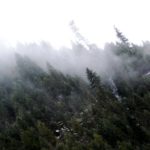
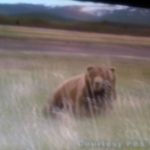
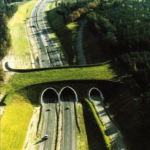
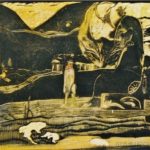






I am Bill Ohrmann’s son, John, and periodically I google my Dad’s name to see if there is any new press about him that we haven’t heard about. Which is how I came across your site. Thank you for your inclusion of my Dad. I especially appreciate that you used Erica Fredrickson’s piece from the Indy. Of the many articles that have been written about him recently, I think she ‘got’ him best of all.
Thanks, John. I stopped by in March on the advice of my cousin from Niarada, and was really inspired by your parents. I love Bill’s work and got a good laugh out of his attitude. Thanks for helping him put out his beautiful creations!
Jack
Pingback: Another Pilgrimage to Jackson, Part II (The Bill Ohrmann Encounter) | Adam Nash Photography
Great! Another art I discovered recently is about sculpted buffalo skulls. You might like it too so you should see it yourself.